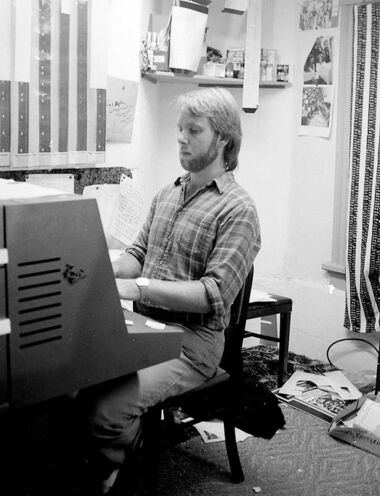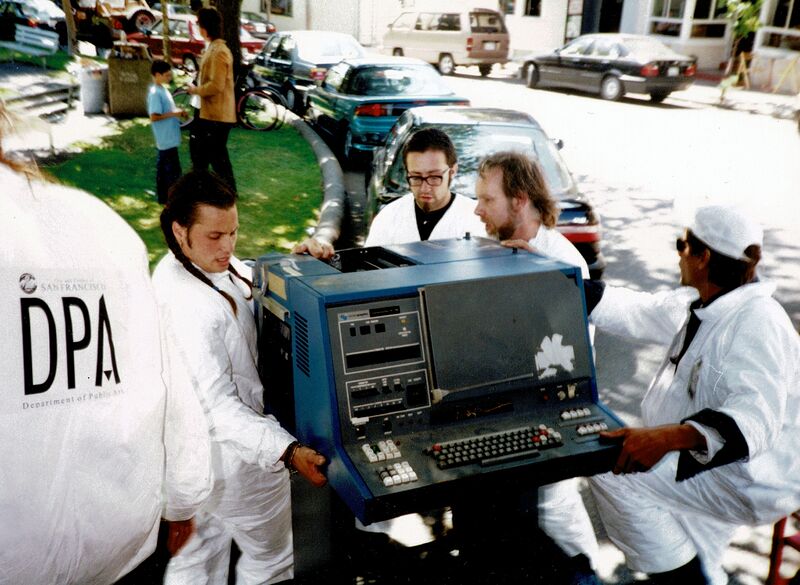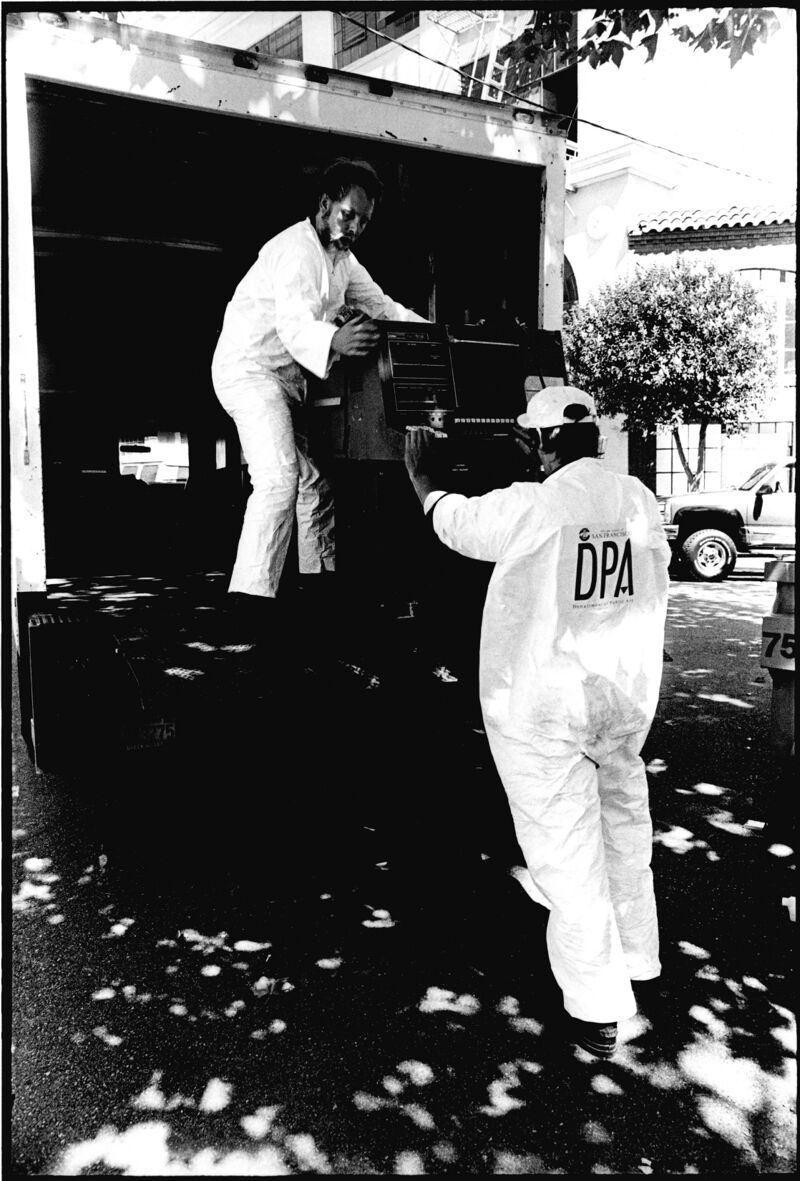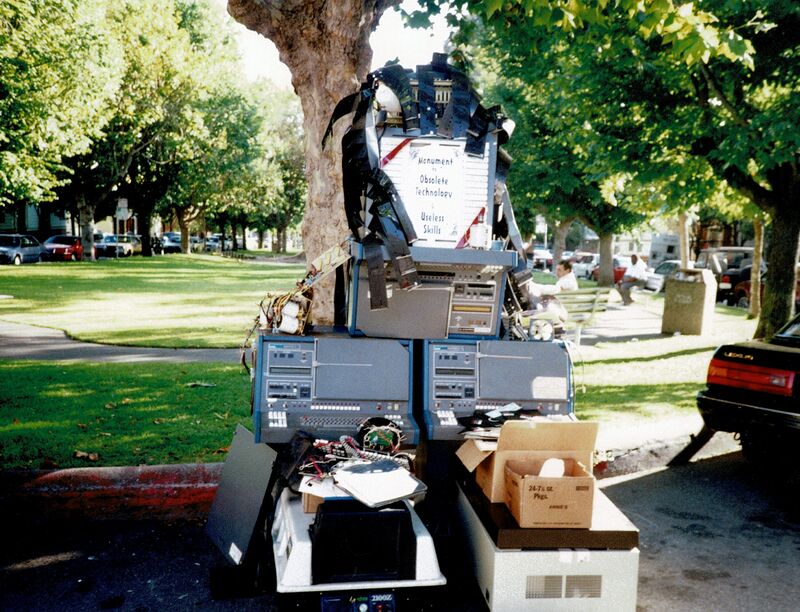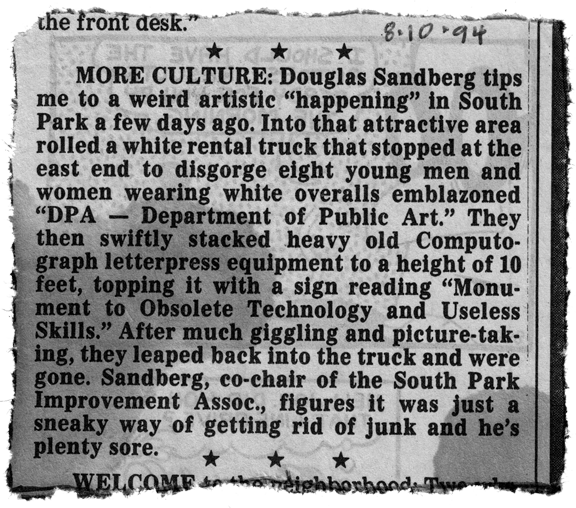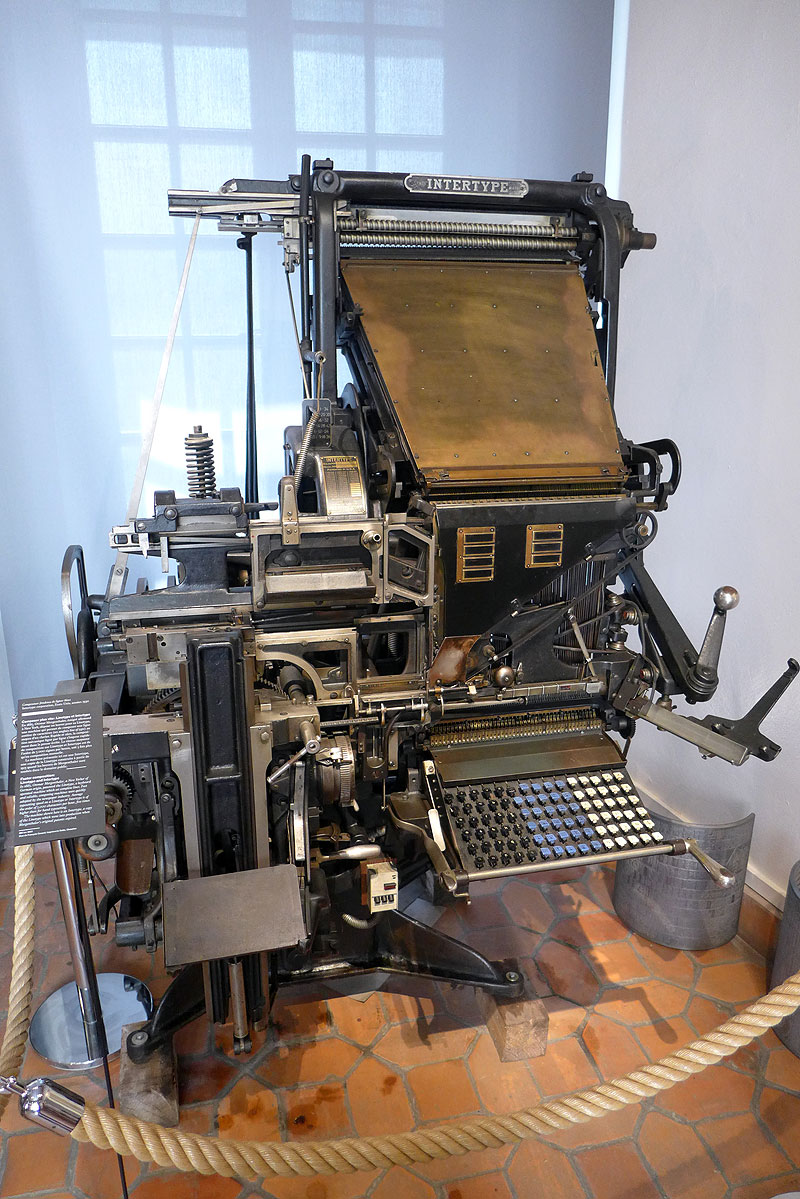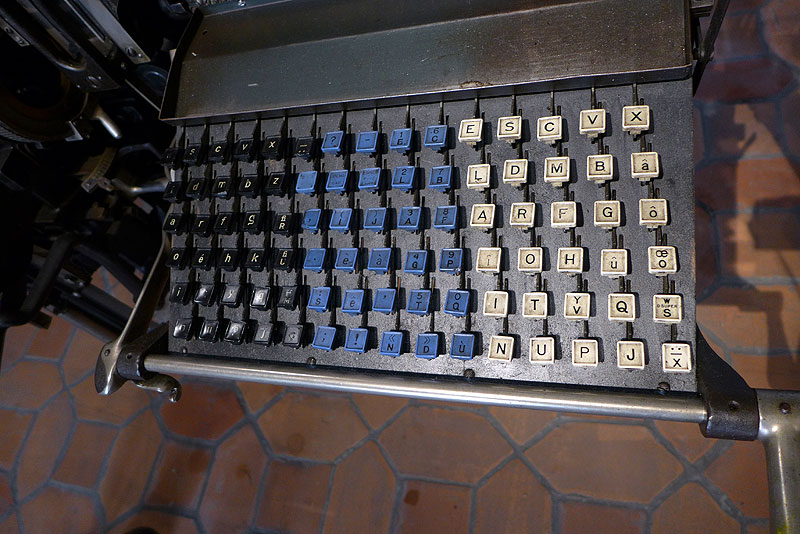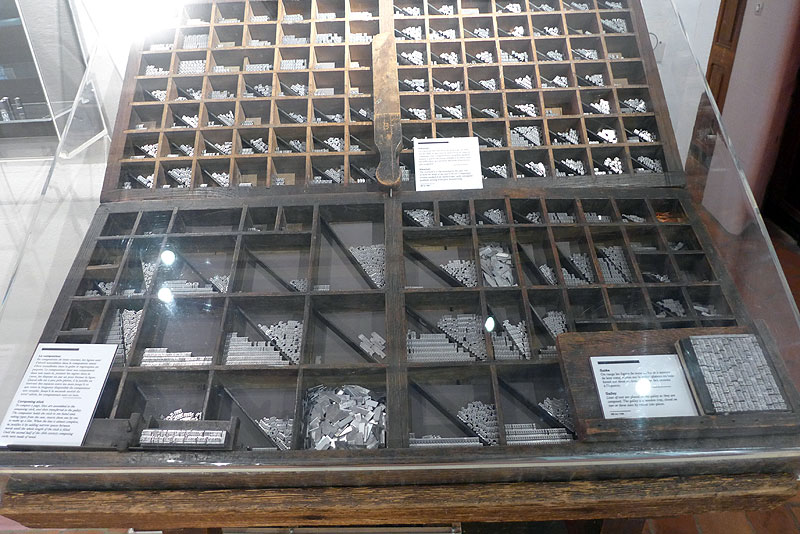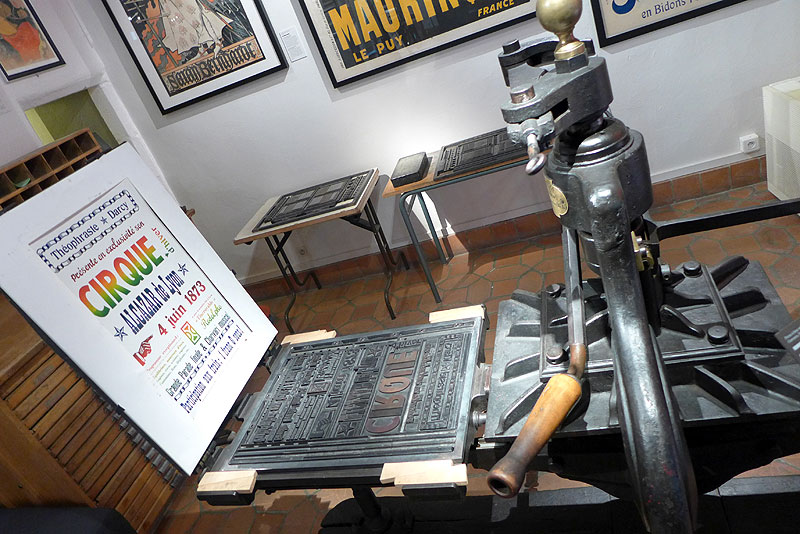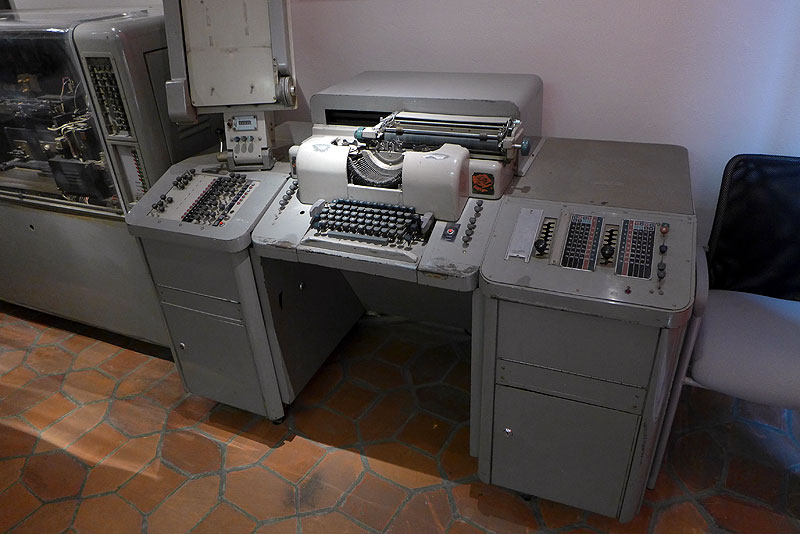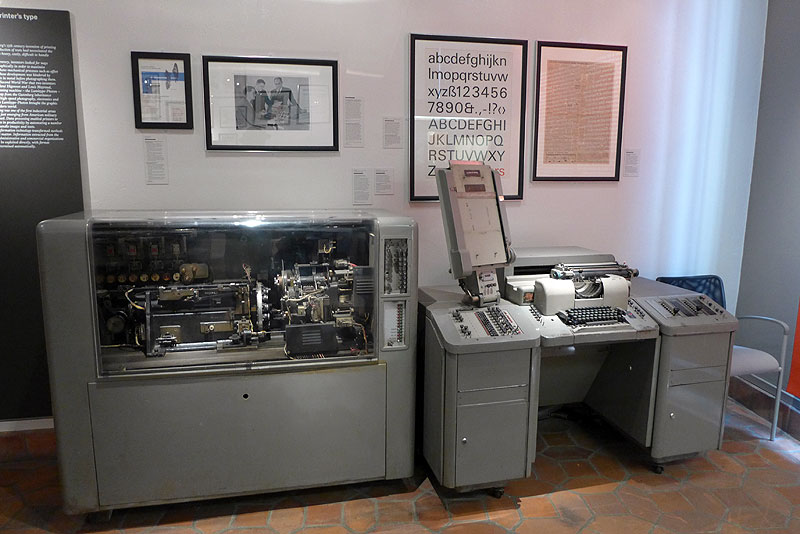I Was a Typesetter!
"I was there..."
by Chris Carlsson, 2024
Here I am typesetting on a Compugraphic Jr., fonts (film strips) hanging behind me (to my right), c. 1984.
I learned to type in the 9th grade at Claremont Junior High in Oakland in 1971. Every day we’d spend an hour on old, heavy, dirty manual typewriters, repeatedly pounding the keys of the QWERTY keyboard, slowly becoming accurate typists. This turned out, surprisingly, to be my main saleable skill as I entered the workforce in the late 1970s. My bookstore clerking life preceded my typing life, but after working at information desks I got a chance to take a class in “word processing,” a new skill and a big upgrade. After mastering the use of the IBM Mag Card II (basically an IBM Selectric typewriter with an adjacent box that could read memory cards shaped like old paper punch cards—there was no screen to see what you were doing), my wage jumped from $6/hour to $12/hour at the temp agencies I worked out of in downtown San Francisco (this was 1980).
Around the same time, Mark Ritchie of Earthworks, a nonprofit dedicated to a radical critique of industrial agriculture, let it be known through the grapevine that he was willing to hand off an actual typesetting machine, a Compugraphic Jr., with a dozen fonts, to anyone willing to take over the remaining lease payments to Chase Manhattan Bank. Caitlin Manning and I decided to do it. Weeks later, we had an actual typesetting machine in our house, and had to create a darkroom space where we could develop the photographic galleys the machine produced.
A few months later, a couple of local neighborhood journalists came knocking, having heard we had a typesetting machine. Would we be willing to typeset the Haight Ashbury Community Perspectives monthly newspaper? And soon after that, would we also do the Tenderloin Times, a neighborhood newspaper that had been produced on typewriters and Gestetner copiers, but was ready to move up to proper typesetting and newsprint? I took on those jobs briefly before handing them off to another guy who needed the work since I had a job at the time at Community Memory where I was the secretary and working on a long-forgotten early computer called a Sol, using Wordstar 1.0 on an operating system called CP/M (pre MS-DOS, long before Windows or Apple).
By 1982, I began working out of my house and within a year we’d rented a basement at Ashbury and Page (I learned later it was the childhood home of Senator Alan Cranston), and my life as a typesetter and graphic artist began. For the rest of the 1980s I ran a small business called Typesetting Etc. that typeset the aforementioned newspapers, adding a couple of others along the way, and doing a lot of resumes, flyers, and ads for such thriving businesses as the early gay phone sex “Dial-a-Load” service.
The technology I was using, originally a Compugraphic Jr., and later Compugraphic IVs, was a big upgrade over the hot metal type that had been used for centuries. Instead of working with lead, setting the letters one by one into trays, this was an early photographic process. Negative film “fonts” with all the letters arranged in vertical rows would be attached to a drum that spun at a high-speed once you had installed the font and closed the lid on the machine. A tiny strobe light rode back and forth along a screw, shooting a flash of light as the correct letter spun by. The operator manually set the width of the column (in picas, 6 to an inch), as well as the leading (the space between lines, using the term for the strips of lead that had once been used, measured in points, 72 to the inch). If you wanted to change the size of the font, you had to open the back and change a belt and pulley and then reset some switches. It was quite manually intensive and clunky. The Compugraphic IVs were much more sophisticated and allowed us to hit a button to change the font size, though only the pre-set sizes available on the front of the machine (8, 9, 10, 11, 12, 14, 18, 24, 36 pt.). For larger sizes we would have to produce the type, develop it in the dark, hang the galley to dry, then use our “copy camera” to blow it up to the size we wanted. We were also able to produce PMTs (photo mechanical transfers) of black and white line art, and halftones by using a halftone screen over the photographic paper on which we shot the enlargement or reduction of a glossy photo.
Once we had produced galleys of type, along with the art requested, usually we gave that to the client. Sometimes we were hired to do the whole job, including the paste-up and sometimes even the design (we learned how to do all this by producing our own magazine, Processed World). Either we, or the clients, would work over a light table with the light coming from below so it would illuminate the paste-up boards. The boards were printed in “photo dropout” blue ink in a tiny grid (many different measurement grids were available at the graphic arts supply stores of the time—millimeters, picas, inches). We would run the galley of type through a hot wax machine, which coated the back of the galley with a thin coat of slightly sticky wax. This would allow us to paste it on the layout board, but if we needed to pick it up and move it, it could be done repeatedly. Once you had it laid out exactly how you wanted, you’d put tissue over the paste-up and use a rubber roller, or burnisher, to roll out the page. This would squeeze out air bubbles in the wax, causing it to adhere more firmly to the paste-up board.
Describing this now seems so arcane and odd. But it was a set of skills, combined with the expensive equipment, that sustained a lot of skilled workers in San Francisco and all over the world for many decades. In San Francisco there was a cluster of typesetting businesses on the northern slopes of Rincon Hill, between the Bay Bridge and downtown. Eventually we moved our office to 37 Clementina and found ourselves neighbors with Jessie Graphics down the street. Other big typesetters were still in the area too, in the late 1980s. But within a few years, nearly all of them went out of business. We almost did too, but instead, we survived thanks to some good luck, and also because as a small business of two partners, we could learn the new technology that was rendering our previous life obsolete.
Desktop publishing came in like a storm. In the 1980s our typesetting machines had a small 256 character memory (allowing the operator to back up and fix a typo they noticed on the line they were working on—once it reached the end you could hear it printing on the photographic paper inside and it was no longer possible to fix an error except by retyping it later and pasting it over the erroneous line. That’s why you can often see crooked lines in old magazines.) We used computers for email and writing articles, but we couldn’t send the electronic file directly to the typesetting machines that we had. (There were more sophisticated machines on the market with real computer front-ends by the 1980s, but they cost tens of thousands of dollars.) So we thrived at the low end of the market, using equipment that was quickly becoming seriously obsolete. At one point we bought a device sold to us as a front end that would allow us to send computer files to our machines, but it never worked properly.
Some time in 1991 I remember looking over my partner’s shoulder (Chaz Bufe at the time) as he was fiddling with a new Windows installation. Using Wordperfect, a word processing program, he was able to access several hundred fonts (Truetype) and in ANY size he wanted to use them! This was astonishing! And it meant we were not going to be able to sell galleys of type much longer. In 1991, it was still quite an expense to find a place where you could output to “lino,” that is, have a postscript-encoded page that would print properly on high resolution photographic paper or negative, suitable for high quality printing. Most people who were involved in early desktop publishing (as the new systems were called) were working with Apple MacIntosh machines, which had integrated postscript and were able to generate the files artists were creating. We had never embraced the Apple machines, not the Mac or any of its successors, as they were just so expensive. We were comfortable with the PCs, which we’d been working on for a decade, and we learned how to make Windows do what we wanted.
Department of Public Art moving our old Compugraphics into position to become a temporary monument, 1994.
Photo: Glenn Bachmann
Photo: Tom Erickson
Monument to Obsolete Technology and Useless Skills
Department of Public Art, 1994
By 1994 we weren’t using our Compugraphic machines any more. They were taking up a good deal of space in our office at the Grant Building at 7th and Market, so we decided finally we had to get rid of them. By then we had 3 machines and all the associated fonts and 4-bath chemical processing machine. We rented a truck and dressed as employees of the Department of Public Art, we used our equipment to build a “Monument to Obsolete Technology and Useless Skills” at the edge of South Park, which was only beginning to emerge as the heart of the new multimedia gulch taking shape in the mid-1990s. Hilariously our little installation got written up in Herb Caen’s column in the San Francisco Chronicle, one of the few times anything we did got noticed like that.
Herb Caen column in SF Chronicle, August 10, 1994.
Years later I visited the Museum of Printing in Lyon, France, where I saw many of the typesetting machines that preceded my little 1980s moment in the business. Here’s a small gallery of those machines.
Intertypet, from Museé de Imprimerie, Lyon, France
Photo: Chris Carlsson
Lead type and galley.
Photo: Chris Carlsson
How printing and typesetting worked for centuries.
Photo: Chris Carlsson
Typesetting machine, France, c. 1970.
Photo: Chris Carlsson
Strangely enough, I continue to work on magazines and book publishing, working from my home office now. Every year I am hired to publish a half dozen books for various authors who have decided to “do it themselves” after running into the dire condition of the book trade. And I continue to design and “typeset” several regular publications that still exist in print, though it’s always a question about how much longer they will exist that way. Other clients I have had over the years have converted to electronic only, or gone out of business altogether. Nothing lasts forever!
It is remarkable to think about how many radicals survived in the centuries preceding the 1990s by becoming skilled typesetters and printers. Many of them, like myself, had their own publications as a primary motivation for learning the skills and acquiring the equipment. Nowadays, anyone can produce an adequately designed publication by using off-the-shelf software, but you can’t beat the people who still know how it was done before push-button simplicity entered the picture.

